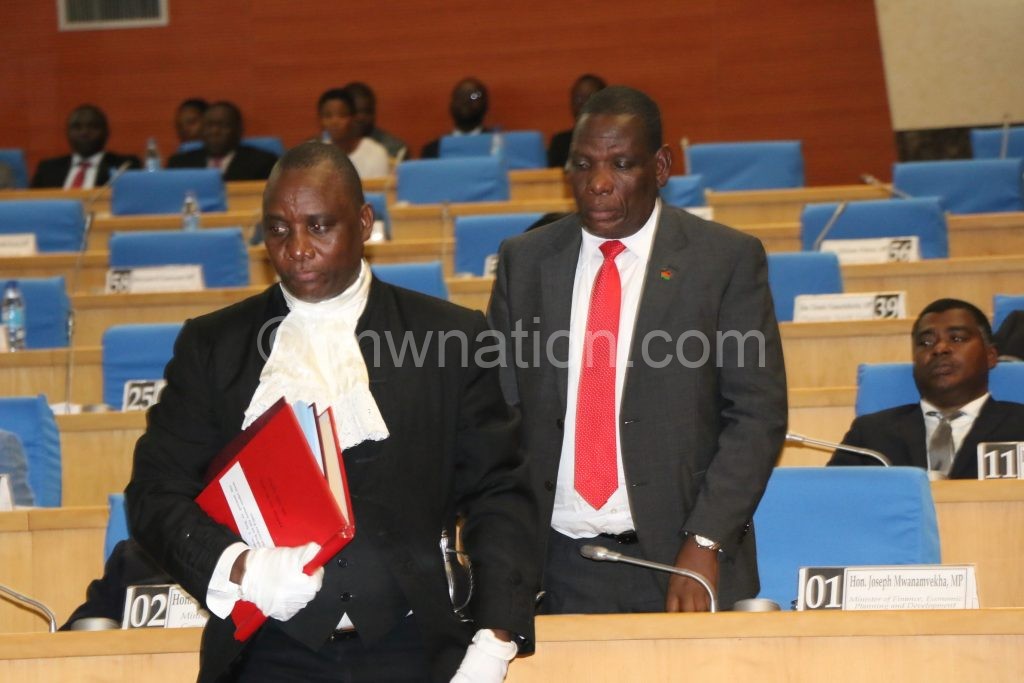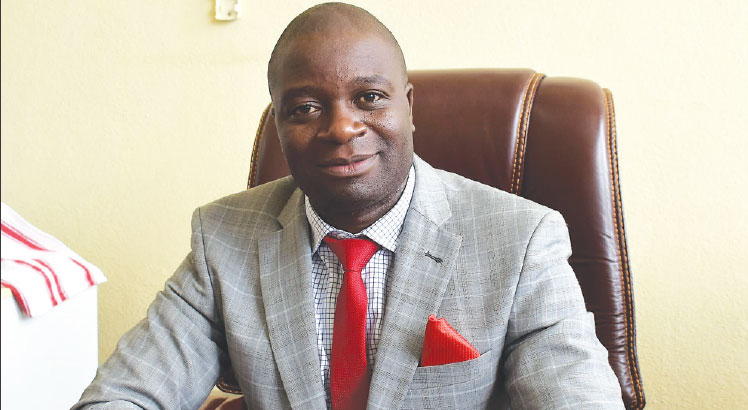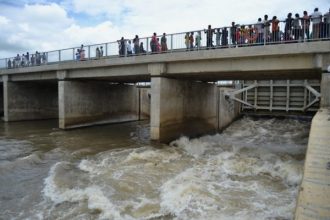Budget revised upwards amid revenue drop
Minister of Finance, Economic Planning and Development Joseph Mwanamvekha yesterday found himself between a rock and a hard place as he had to adjust the 2019/20 National Budget up by K100 billion, amid poor revenue performance.
The adjustment means the budget ballooned from K1.74 trillion to K1.84 trillion.

Presenting the 2019/20 Mid-Year Review Budget Statement in Parliament, Mwanamvekha also announced a K29 billion allocation towards what he repeatedly dubbed “probable fresh election”.
Malawi Electoral Commission (MEC) has submitted a provisional budget of K32.8 billion for the fresh presidential election, following the ruling by the High Court sitting as the Constitutional Court on February 3 this year.
However, the revised budget has provided K29.1 billion for that purpose.
Admittedly, the country’s public purse-keeper swallowed his pride to concede that the financial plan is under severe pressure, especially during the post-election era as demonstrations disrupted business both in private and public sector, resulting in subdued economic growth.
Ballooning expenditure
Amid less-than-expected revenue collected in the first-half of the financial year, Treasury succumbed to the unrelenting pressure to increase total expenditure to K1.84 trillion from the initial K1.74 trillion due to some unforeseen or exogenous shocks.
Mwanamvekha justified the upward revision: “Total expenditure has been revised upwards—from K1.74 trillion to K1.84 trillion—due to increase in wages and salaries, security related expenditures, court case expenditures and probable fresh presidential elections. This notwithstanding, total expenditure as a ratio to the rebased gross domestic product (GDP) is estimated at 21.3 percent, compared to 23.1 percent recorded during the 2018/2019 fiscal year.”
In the budget, the provision for wages and salaries has been revised upwards from the approved K443.4 billion to K465.7 billion and this is on account of higher- than-planned salary adjustment for civil servants.
The initial 2019/20 budget framework put total expenditure and net lending at K1.74 trillion, while inflows of revenue and grants were approved at K1.58 trillion, giving a total financing requirement of K162.1 billion.
On the flipside, it should however, be highlighted that out of the K1.74 trillion planned expenditure, and net lending for the current financial year, K842.8 billion was projected to be spent during the first-half.
Come December 2019, the expenditure outturn was K780.0 billion, representing an underspending amounting to K62.8 billion when compared to its half-year target, thanks to Treasury’s efforts to spend within available resources.
Lower than expected revenue
Critics such as the World Bank and the Economics Association of Malawi (Ecama) are now vindicated on their earlier sceptism over revenue assumptions in the budget.
Of the total annual approved revenue and grants of K1.58 trillion underpinning the budget, it was projected that by the end of the first-half of the current fiscal year, a total of K729.5 billion would be realised, of which total domestic revenue was K655.2 billion while grants were K74.3 billion.
Such projections were based on the seasonal pattern in domestic revenue collection, economic prospects and commitments by development partners on grants.
The mid-year domestic revenue target of K655.2 billion comprised K629.9 billion in tax revenue and K25.2 billion in non-tax revenue.
However, fast forward to December 31 2019, a total of K548.6 billion was collected, representing a performance of 83.7 percent.
The underperformance did not spare the tax revenue basket as out of a targeted K629.9 billion for the first-half, K525.6 billion was realised, representing a tax revenue collection performance of 83.4 percent.
“Underperformance in tax collection was recorded in income and profit, capital gains and goods and services taxes,” said Mwanamvekha.
Seemingly, the recent truck drivers’ demonstrations have also affected plans by Mwanamvekha and team. This is manifested in the subdued performance in international trade taxes recorded largely on account of low import volumes.
For instance, trade volumes between South Africa and Malawi were affected by the truck drivers’ demonstrations, the minister told Parliament.
Furthermore, post-elections demonstrations resulted in closure of some border posts and Malawi Revenue Authority (MRA) offices.
Sounding adamant, however, Mwanamvekha maintains that the revenue projections as provided in the approved 2019/2020 budget were realistic and correspond to the outcome of the 2017 GDP rebasing exercise by the National Statistical Office (NSO), which he said has revised the country’s GDP figure upwards by 37.0 percent.
Optimism
The mid-year budget also clearly reflects the usual optimism from Treasury, at least if the key macroeconomic assumptions underpinning the budget are anything to go by.
In recent years, government has attained and maintained macroeconomic stability characterised by low inflation, interest rates and stable exchange rate, among other indicators.
In the mid-year budget, the fiscal plan is still upbeat as it envisages an estimated real economic growth rate of 5.0 percent in 2019 and 7.0 percent in 2020, the same projections which underpinned the approved budget.
A seven percent ambitious projected growth rate this year, if attained, could boost donor and investor confidence while increasing private sector activity and meaningfully impact on poverty reduction efforts by authorities.
The projected real GDP growth rates are also way above Africa’s and sub-Saharan growth rates.
While sub-Saharan Africa grew by 2.9 percent and 3.5 percent in 2018 and 2019, respectively, Malawi grew by 4.0 percent in 2018 and 5.0 percent in 2019.
In the revised budget, Mwanamvekha is also firm on his earlier ambitious targets of bringing average inflation rate of 8 percent during the fiscal year.
He hopes to maintain a stable exchange rate of about K750 to a United States (US) dollar, while also putting policy rate—the rate at which commercial banks borrow money from the Reserve Bank of Malawi (RBM)—steady at 13.5 percent, all things being equal.
The projected 8 percent annual average inflation represents 1.4 percentage points lower than the average rate of 9.4 percent realised in 2019.
Likewise, the economy seems to be on course on the accumulation of international foreign exchange reserves, which stood at $846.6 million, representing 4.1 months of imports, which has generally resulted in a stable Malawi kwacha exchange rate against major currencies and in the process easing non-food inflationary pressures.
Govt goals
Interestingly, government’s overarching objective in the 2019/2020 budget is still to leverage on the macroeconomic stability to tackle five key issues, namely economic growth; job creation; economic empowerment; sustainable debt management and infrastructure development.
As a result of the proposed revisions in revenues and expenditures, the budget has seen the overall deficit being revised upwards from 1.9 percent to 3.7 percent of GDP, which is still lower than what was recorded in 2018/2019 at 5.1 percent.
Way forward
With the country on the verge of holding another election, there is still enormous fiscal pressure exerted on Treasury and Mwanamvekha admitted that it will be extremely difficult for government to finance this election.
He said as it stands, government is still discussing with development partners for financing of the difference and possible run-off elections.
“Should we not get positive response from the donors, government will have no option but to either increase borrowing or drastically cut expenditure which will likely affect service delivery in all sectors,” he says.





